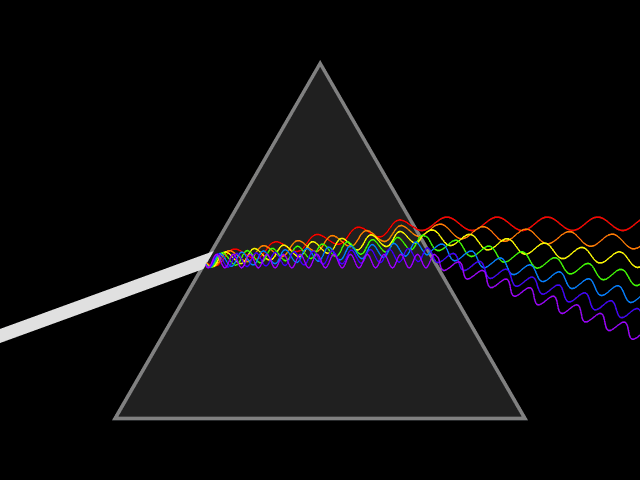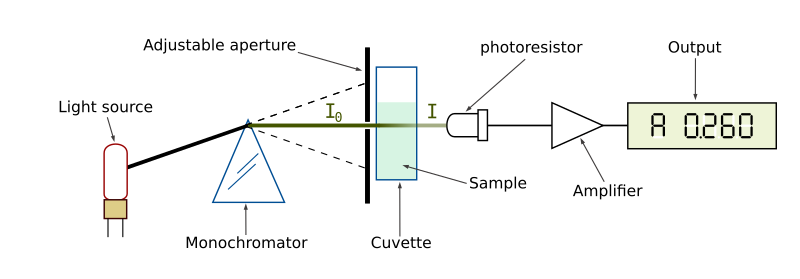Contents
Properties of Light

Diffraction of light through a prism exposes the components wavelengths of light.

Spectrophotometry
Spectrophotometers (spectro-image/color ; photo-light ; meter-measure) are used for chemical analysis of solutions based on properties of absorption or transmission.

Transmittance of a light source through a cuvette. The intensity of light, I0, decreases as it passes through the solution. The light detected by the sensor, I, reflects the transmittance of the solution.
If light is being absorbed by chemicals in the solution, this results in a lower transmission. Absorbance is therefore inversely related to transmittance as expressed by the equation:
Follow the virtual demonstration at: http://www.virtual-labs.leeds.ac.uk/pres/spectrophotometry/ (CC-BY-NC-SA) for a more in-depth explanation of spectrophotometry.
Beer’s Law
Beer’s Law is a relationship between the concentration or amount of a dissolved substance in a solution that is reducing the amount of transmitted light due to the absorption of the radiant energy. Lambert’s Law states that the reduction of transmittance was related to the length of the path of light. As the light path increases through a substance, there is a reduction in transmittance. Collectively, these ideas are referred to as Beer-Lambert Law, but most observers will control the path length and simply refer to it as Beer’s Law.

